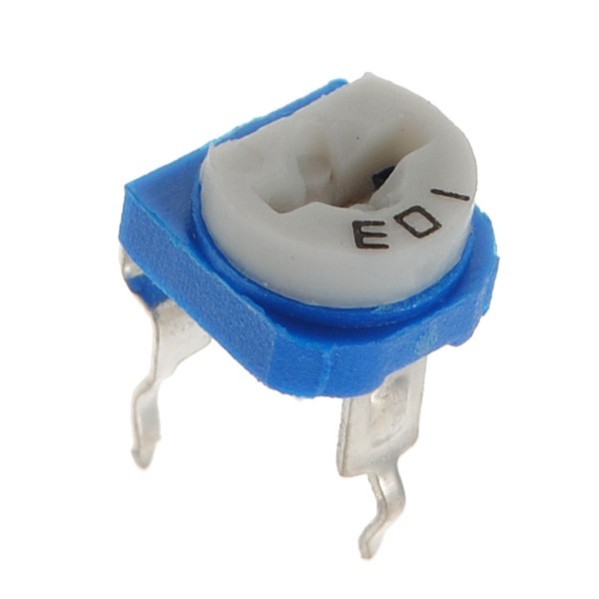








1-Kilo ohm Trimmer Potentiometer (3 pin)
A 1K Pot refers to a 1 kilohm (1KΩ) potentiometer, which is a type of variable resistor. Like other potentiometers, a 1K potentiometer allows you to adjust its resistance within a range from 0 ohms to 1,000 ohms (1KΩ).
₹ 6 ₹10
10
Add FAQ
A 1K Pot refers to a 1 kilohm (1KΩ) potentiometer, which is a type of variable resistor. Like other potentiometers, a 1K potentiometer allows you to adjust its resistance within a range from 0 ohms to 1,000 ohms (1KΩ).
What is a Potentiometer?
A potentiometer is an electrical component with three terminals that can be used to vary the resistance in a circuit. It typically has a rotary or sliding mechanism to adjust the resistance between two of its terminals. Potentiometers are commonly used to adjust voltage levels, current levels, or other variables in circuits.
Components of a Potentiometer:
- Two fixed terminals: These are at each end of the potentiometer and have a fixed resistance to the wiper terminal.
- One adjustable wiper terminal: This terminal moves along the resistive track as you adjust the potentiometer, changing the resistance between the wiper and each of the fixed terminals.
How It Works:
When the wiper is moved (by turning a knob or sliding the lever), the resistance between the wiper and the fixed terminals changes. In a 1K potentiometer, you can vary the resistance between 0Ω and 1000Ω by adjusting the wiper.
Common Applications of a 1K Potentiometer:
- Volume Control: Often used in audio equipment to adjust the loudness (volume) of an amplifier, speaker, or audio system.
- Brightness/Contrast Control: Used in displays or LED systems to adjust the brightness or contrast.
- Signal Tuning: Used to tune circuits, such as adjusting the input sensitivity of sensors or signal processing systems.
- Adjustable Gain in Amplifiers: In some audio and electronic circuits, a potentiometer adjusts the gain (amplification) level.
- Voltage Divider: Used to create a variable voltage divider in a circuit, allowing you to adjust the voltage at a particular point in a circuit.
- Calibration: In sensor circuits or for adjusting reference voltages in analog circuits.
Why 1KΩ?
- 1K potentiometers are a good balance for many applications that require moderate resistance control, especially in audio, sensor applications, or low-power circuits.
- 1KΩ is often chosen because it is useful for circuits that need to be finely adjusted without going to extremes in resistance values (as you might need with higher or lower resistance potentiometers).
Specifications of a 1K Potentiometer:
- Resistance Range: From 0Ω to 1KΩ (depending on the position of the wiper).
- Tolerance: Potentiometers often have a tolerance that indicates how much the actual resistance might deviate from the stated value (usually ±10%).
- Power Rating: Most potentiometers can handle only small amounts of power. The power rating is typically in the range of 0.1W to 0.5W, depending on the specific model.
Types of 1K Potentiometers:
- Rotary Potentiometers: These are the most common and are adjusted by turning a knob.
- Slide Potentiometers: These are adjusted by sliding a lever across a resistive track.
- Digital Potentiometers: These use digital signals to adjust resistance electronically rather than mechanically.
Example Applications:
- Audio Amplifiers: Adjust the gain or volume.
- LED Dimming: Control the brightness of LEDs.
- Sensor Sensitivity: Adjust the input sensitivity in circuits with analog sensors.
- Test Equipment: Used in test equipment for setting specific signal levels.
If you're using a 1K potentiometer in a project, it's often for adjusting the current, voltage, or other electrical parameters within a circuit. Let me know if you'd like more information on specific circuits or projects using a 1K potentiometer!

0 Reviews For this Product












2.jpeg&width=225&quality=80)
2.jpeg&width=225&quality=80)
.jpeg&width=225&quality=80)

